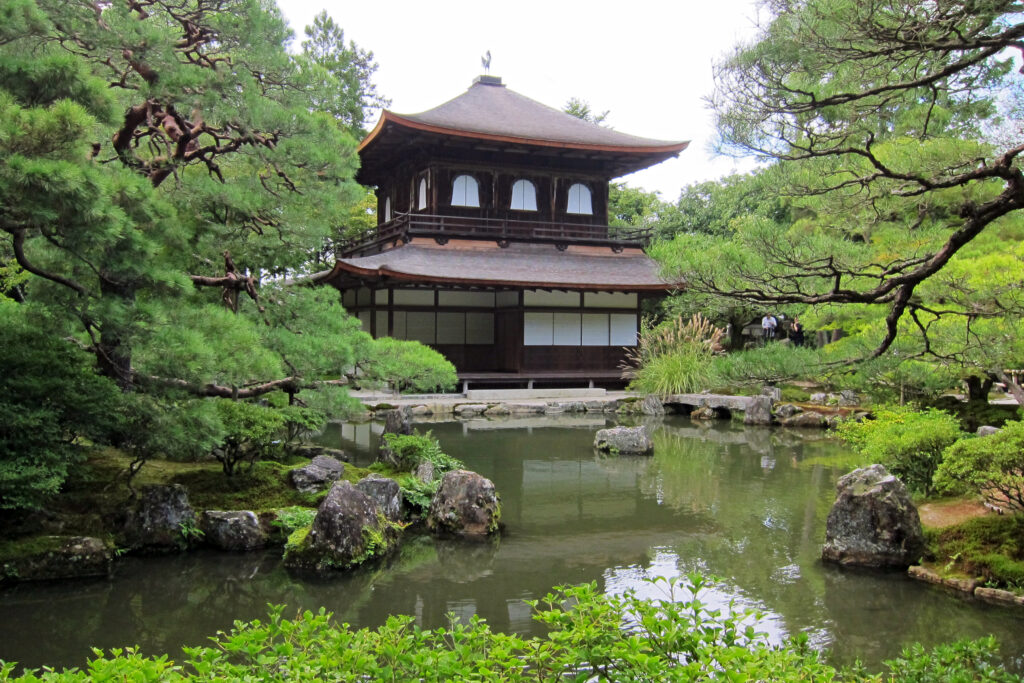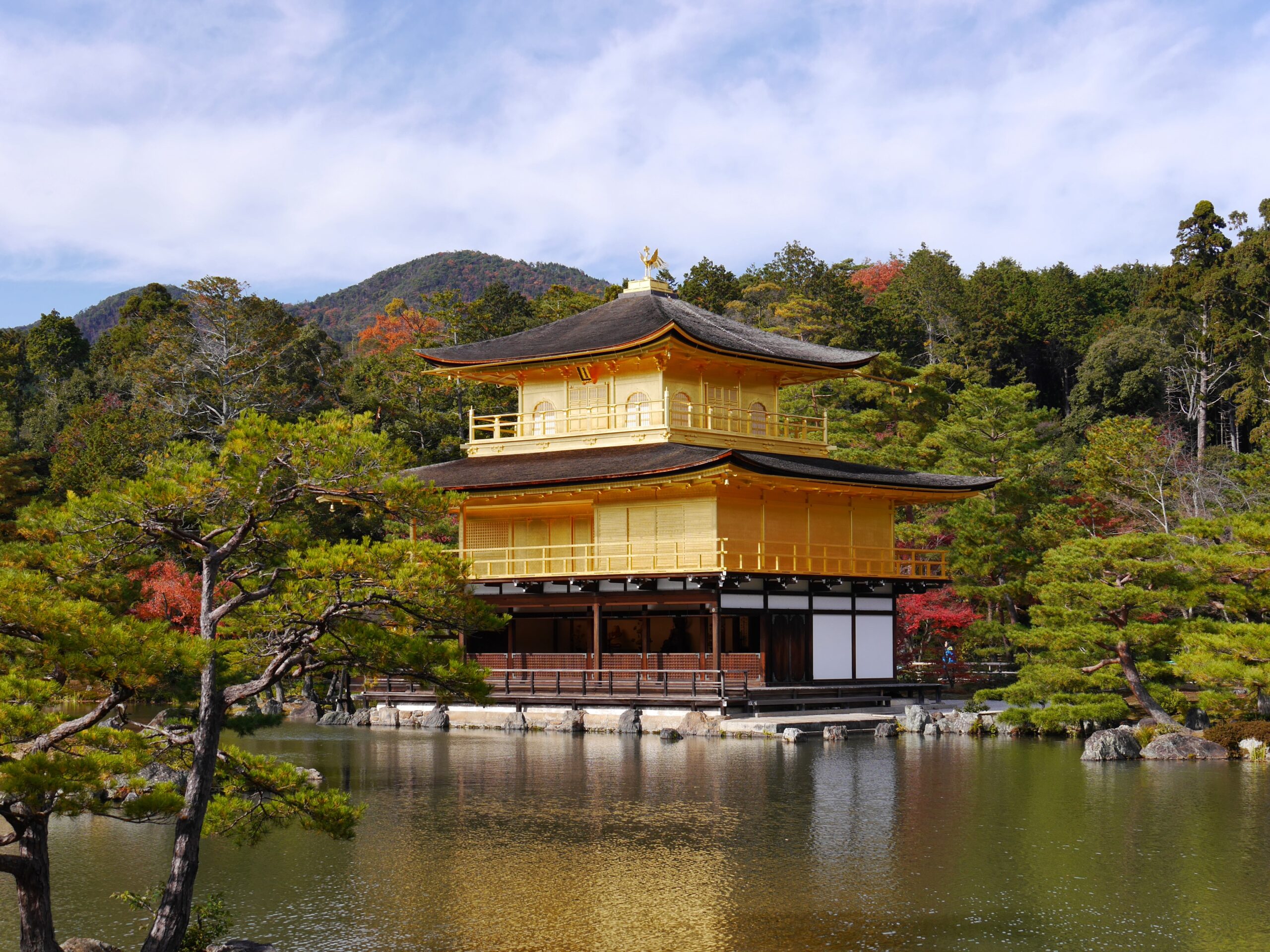The rise and fall of Japan’s Ashikaga Shogunate and their tea utensil collection
Photo of Kinkakuji (The Golden Pavilion), Kyoto, Japan – Wikimedia
If you have ever visited Kyoto, I bet you visited Kinkaku-ji or the Temple of the Golden Pavillion. Covered with gold leaf, the temple is lavish. The original was built when tocha, tea gambling, was most popular.
Ashikaga Yoshimitsu足利義満(1358–1408), the 3rd generation of Ashikaga Shogunate, re-established trade between China and enjoyed enormous wealth. In addition to building this lavish Golden Pavillion, he imported many valuable tea utensils such as tea bowls and kettles, accumulating his collection.
About a century later, Ashikaga Yoshimasa 足利義政(1436-1490), Yoshimitsu’s grandson and the 6th Shogun, tried to build a temple covered with silver.
He did build a temple, now called Ginkaku-ji or the Temple of the Silver Pavilion. But it is far from lavish, with no silver coating.

Obviously, you can imagine the huge difference in their financial situation.
Yoshimasa had to wait until the Onin no Ran, an 11-year civil war was ended, to build his dream villa, the Silver Pavillion. By the time the war was over, his shogunate reign was weakened and his financial situation worsened. He could no longer afford the silver coating.
Not only that, Yoshimasa had to sell many treasures that he inherited from his grandfather, including precious tea utensils imported from China. Who became the new owners of such treasures? Newly advanced samurais and merchants in Sakai.
